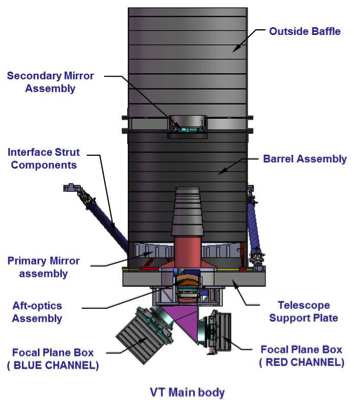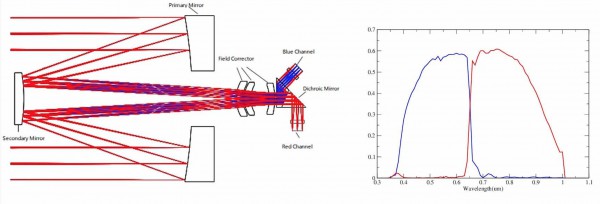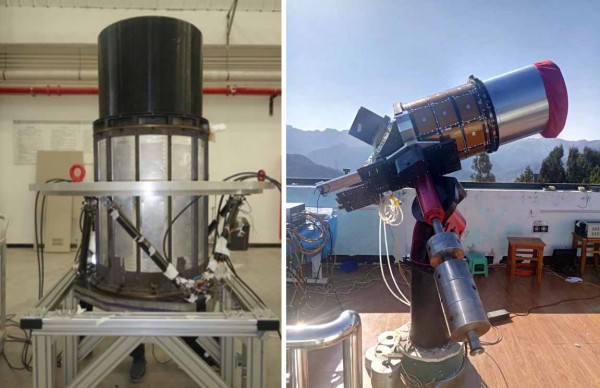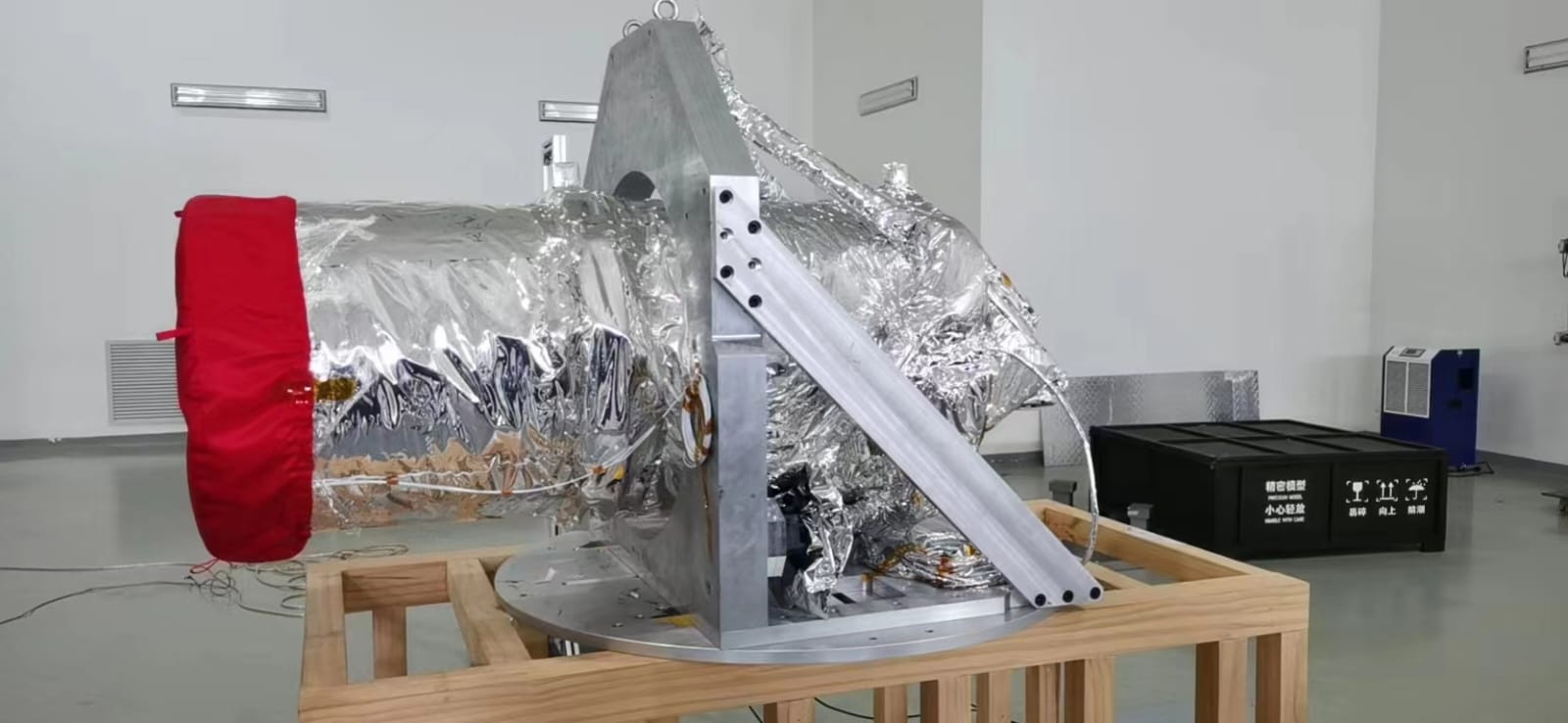The VT telescope (Visible Telescope) is a dedicated optical tracking telescope, onboard the SVOM satellite. Its main purpose is to detect and observe the emission in visible light, produced immediately after a gamma burst. In less than 10 minutes after the alert given by the ECLAIRS camera and using the refined position provided by the MXT instrument, this instrument is able to reconstruct the position of the gamma burst with an accuracy of a few seconds of arc. The VT is expected to detect and locate about 60 gamma bursts per year.

The VT telescope is a Ritchey-Christian telescope with a 40 cm primary mirror and a field of view of 26 arc minutes x 26 arc minutes. Its focal plane is equipped with two 2048 × 2048 CCD cameras covering two wavelength ranges: the blue channel from 450 to 650 nm and the red channel from 650 to 1000 nm. The blue channel CCD is a thinned, backlit detector, while the red channel CCD is specially processed to achieve high sensitivity at long wavelengths. The quantum efficiency of the red channel CCD is greater than 50% at 0.9 ?m, allowing the VT telescope to reach the visual magnitude of 22.5 in 300 seconds. The VT is expected to detect very far-distant gamma-ray bursts with a redshift greater than 6.5, corresponding to distances more than 12 billion years away.

In order to quickly provide the position of gamma ray bursts with a precision less than the arc second, the VT telescope carries out on-board data processing. After the localization of a gamma burst by the MXT instrument co-aligned with the VT telescope, lists of possible sources are extracted from the successive images obtained by the VT telescope, centered on the gamma burst position provided by the MXT.
These lists are transmitted in near real time via the VHF high-frequency network, to allow the ground-based software to produce finding charts and to search for the optical equivalent of the gamma-ray burst, by comparing to existing catalogs. If a counterpart is identified, an alert is broadcast to the world astronomical community to trigger observations using large ground-based telescopes, in particular to measure the redshift of the gamma-ray burst.

According to the results of the Swift mission, confirmed high red-shift gamma-ray bursts are rare, contrary to theoretical calculations that predict a fraction greater than 5 to 7%. This is probably because, for most of the gamma-ray bursts detected by Swift, optical tracking images are not deep enough to allow for rapid identification, preventing large ground-based telescopes from performing spectroscopic observations.
The SVOM mission will greatly improve this situation thanks to the high sensitivity of the VT telescope, especially for long wavelengths, and the generation of quick alerts on the visible counterpart of the burst. In addition, the SVOM pointing strategy, in the opposite direction to the sun, allows gamma ray bursts to be observed very early using large ground-based spectroscopic telescopes. As a result, it is expected that more high redshift gamma ray bursts will be identified by SVOM.

Institutes: NAOC Beijing, XIOPM Xian (China)

